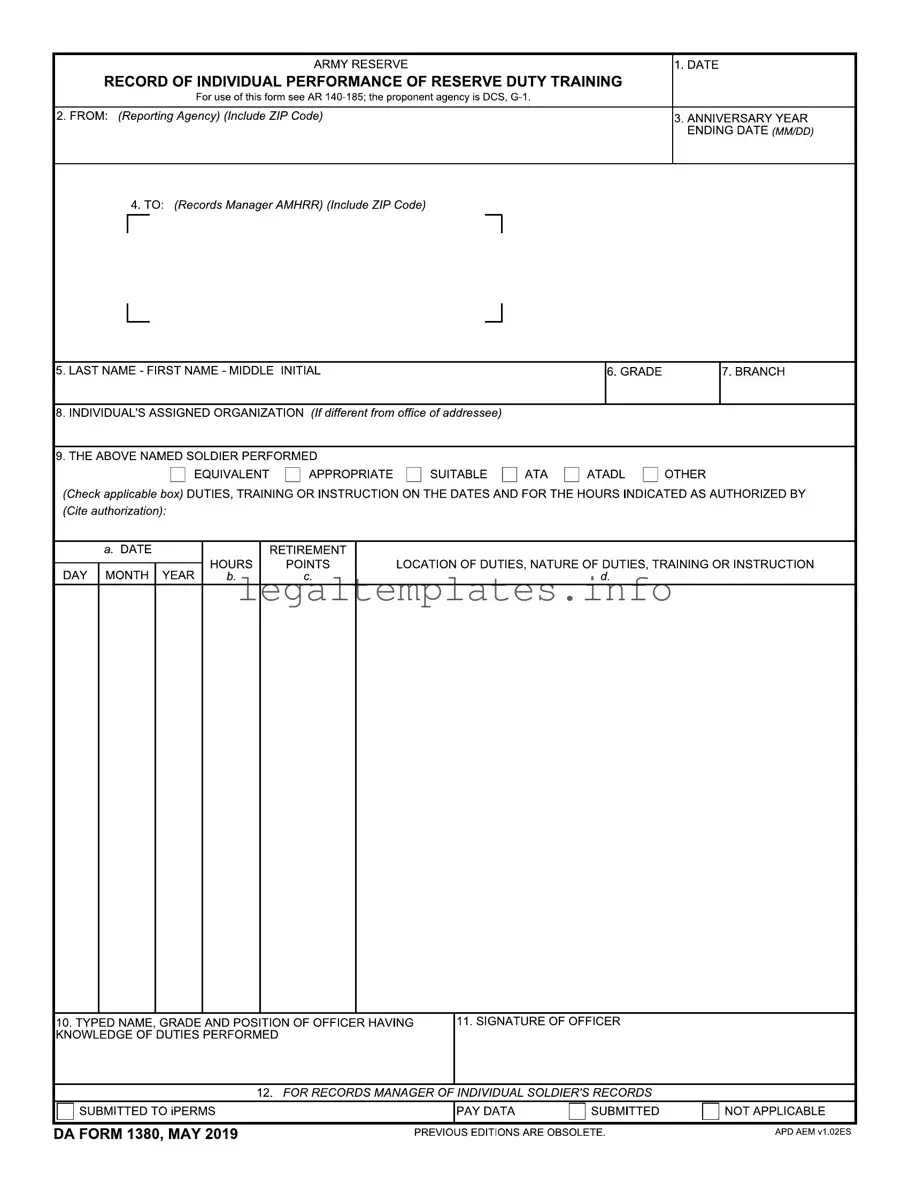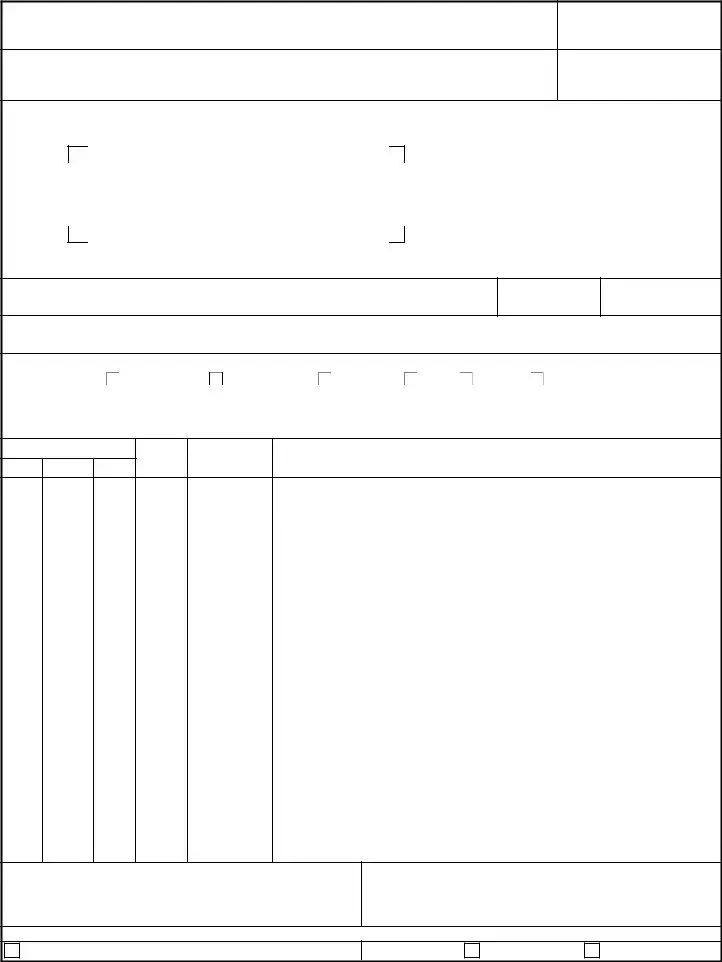What is the purpose of the DA Form 1380?
The DA Form 1380 is used to record individual performance of reserve duty training outside the normal inactive duty training. It serves as a formal document to acknowledge the completion of Army Reserve training, duties, or instruction, whether it's in a paid or non-paid status. This form also plays a crucial role in calculating retirement points and ensuring the appropriate military personnel records are updated accordingly.
When should the DA Form 1380 be prepared?
It is required to prepare the DA Form 1380 by the last day of each duty month. This timing is crucial for the submission to either the pay channel or to the Army Human Resources Command (AHRC) for non-paid inactive duty training, as per the regulations outlined in AR 140-185, Table 2-3.
Who is responsible for preparing DA Form 1380?
The responsibility for preparing DA Form 1380 varies depending on the type of reserve training or duties performed. It can be prepared by chiefs of proponent agencies for approved training projects, military representatives at professional meetings, commanding officers for attached training, or Soldiers for training attachments with another service, among others. The key is that it is filled out correctly and signed by a duly authorized official.
How is the DA Form 1380 filled out?
Items 1 through 12 on the DA Form 1380 are fairly self-explanatory and include the soldier's personal information, duty performance details, and validating signatures. Important sections cover the type of duty performed, periods of duty with hours performed, and the location/nature of the duties. It must also indicate if the training was in a paid status or non-paid status, with the respective retirement points calculated accordingly.
What are the approved categories of duties on DA Form 1380?
On the DA Form 1380, soldiers or officers must check the appropriate box to indicate the type of duty performed. This includes categories like appropriate duties, training, instruction, or other permitted activities as authorized in the governing regulations. It ensures the proper categorization and credit of reserve duties.
How are retirement points calculated on the DA Form 1380?
Retirement points are calculated based on the total number of hours for each duty day, in accordance with Table 2-3 of AR 140-185. Specific codes indicate whether the period was paid or non-paid, and the number of retirement points earned for each period. Special rules apply for funeral honors and preauthorized conferences.
What happens after the DA Form 1380 is completed and signed?
Upon completion and signature validation, the DA Form 1380 should be promptly processed for pay or non-paid retirement points. Units are responsible for submitting the form to DFAS for paid duties or AHRC for non-paid duties by the designated deadline. This ensures that soldiers receive the appropriate credit for their reserve duty performances.
Where are completed DA Forms 1380 filed or submitted?
Validated DA Forms 1380 are filed per AR 25-400-2 and must be submitted to the soldier's Army Military Human Resource Record (AMHRR), commonly referred to as iPERMS, in accordance with AR 600-8-104. This step is crucial for maintaining accurate and up-to-date service records.
What is the importance of accurately completing the DA Form 1380?
Accurately completing the DA Form 1380 is vital for several reasons. It ensures soldiers receive proper credit for their reserve duties, which impacts their pay, retirement points, and career progression. Precise documentation supports the integrity of military records and enables the efficient administration of Army Reserve personnel.


